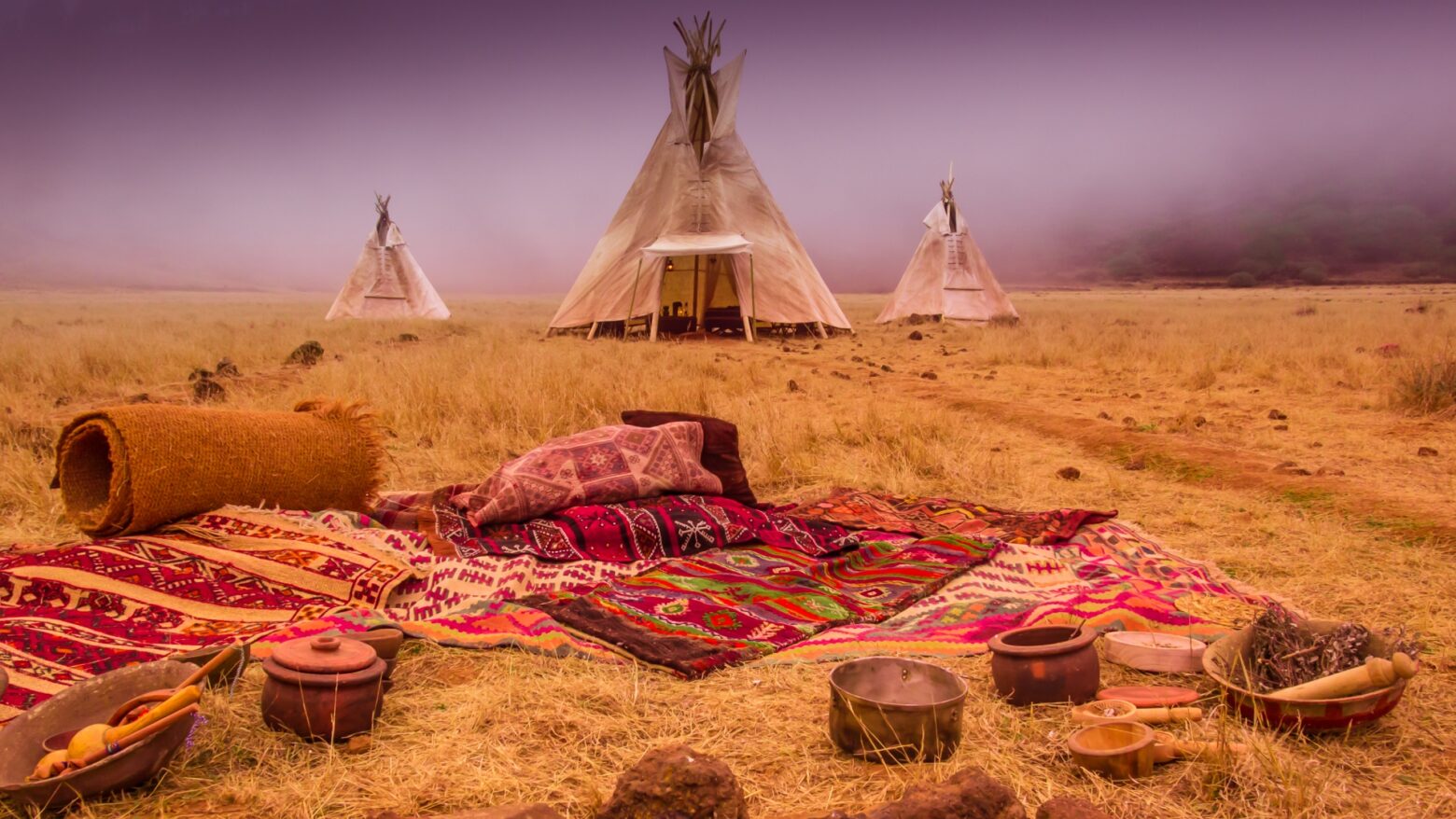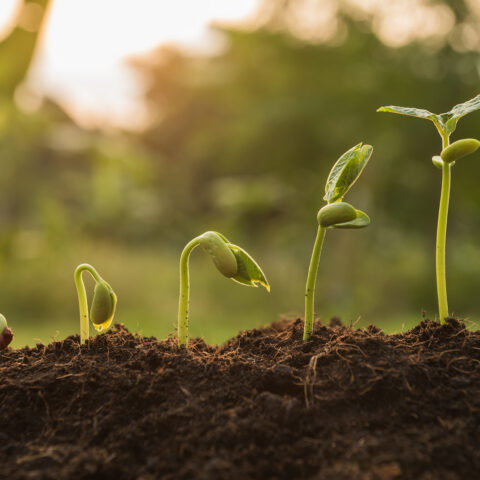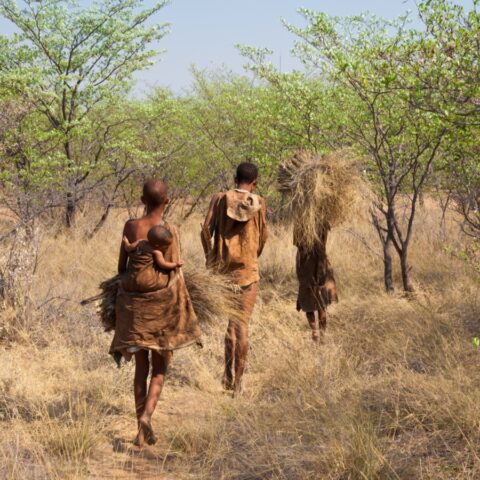How the Eating Habits of American Plains Indians Contributed to Their Tall Statures

George Catlin, the famous chronicler of American Indians, circa 1832, glowingly used these words to describe the Crow Tribe, “They are really a handsome and well-formed set of men as can be seen in any part of the world. There is a sort of ease and grace added to their dignity of manners, which give them the air of gentlemen at once. I observed the other day, that most of them were over six feet high . . .” 1 Conversely, the average height for adult American men is five feet 9 inches tall.
Catlin goes on to say “It is but to paint a vast country of green field, where the men are all red – where meat is the staff of life . . .” 1. He continues, the Sioux were “tall and straight,” but “none [was] superior in stature, excepting the Osages,” to the northern Cheyenne, there being “scarcely a man in the tribe, full grown, who is less than six feet in height.”
Similar observations were made in an 1819-1820 expedition by Major Stephen Long. He stated that the Indians of the Missouri region were “in stature, equal, if not somewhat superior to the ordinary European standard: tall men are numerous 2.
While without supportive data, these kinds of anecdotal, historical statements should be viewed cautiously, a previously unknown and remarkable scientifically sound data set from an earlier era (1892) has surfaced in the past 13-24 years which verifies these observations 3-8.
Tables one and two below provide little doubt that in the nineteenth century, adult males from North American Plains Indian tribes were the tallest people in the entire world 5,7,8. Now, the next logical question is why? Can this height be achieved without the consumption of dairy?
Table 1. Stature of adult male North American Plains Indians in 1892 5,7,8.
| Tribe | Height (cm) | Standard Deviation | Sample Size (n) |
| Arapaho | 174.3 | 6.9 | 57 |
| Assiniboine | 169.6 | 6.0 | 22 |
| Blackfoot | 172.0 | 5.3 | 58 |
| Cheyenne | 176.7 | 5.6 | 29 |
| Comanche | 168.0 | 6.4 | 73 |
| Crow | 173.6 | 6.7 | 227 |
| Kiowa | 170.4 | 5.7 | 73 |
| Sioux (Teton) | 172.6 | 5.6 | 584 |
Table 2. Mean stature of adult, male troops born in the mid-nineteenth century 7,8.
| Country or Place | Height (cm) | Country or Place of Origin | Height (cm) |
| Australia | 172 | Moravia | 166 |
| Canada | 171 | United Kingdom | 166 |
| United States | 171 | France | 165 |
| Norway | 169 | Russia | 165 |
| Iceland | 168 | Germany | 164 |
| Scotland | 168 | Netherlands | 164 |
| Sweden | 168 | Spain | 162 |
| Bohemia | 167 | Italy | 161 |
| Lower Austria | 167 |
Maximal adult height in all humans seems to be dependent upon genetic factors, but more importantly upon nutritional factors which maximize the genetic potential for increased stature 8,9. This cohort of adult male North American Plains Indians living in the 19th century is an unusual cohort, to say the least, in that we not only have adult stature data, but we also have nutritional data from this same era in these same tribal groups of people. The Ethnographic Atlas 10,11 provides data for the plant to animal subsistence ratios in the world’s hunter gatherer societies 12, including North American Plains Indians 10-12.
In Table 3 (extracted from the Ethnographic Atlas [10,11] below) you can see that North American Plains Indians ate the majority (76 – 85 %) of their daily calories as animal foods. Bison represented the primary source of food calories for these tribes 5,7,8, and they ate the entire carcass (marrow, brains, eyes, tongue, kidney, liver, heart, blood, gonads, sweetmeats, tripe and just about everything else). Elk, antelope and deer were also hunted and eaten by these Great Plains hunter gatherers and a variety of plant foods were also consumed as they appeared seasonally. But the take home point here for modern day Paleo Dieters is that these people were healthy, strong and tall of stature without dairy foods of any kind in their diet. A point that seems to be missed and not appreciated by some so called “experts” of the contemporary Paleo Diet movement 13,14.
Table 3. Plant to animal subsistence ratios by calorie in North American Plains Indians 10,11
| Tribe | % Plant Food | % Animal Food | % Fish Food |
| Arapaho | 16-25% | 76-85% | 0% |
| Assiniboine | 16-25% | 66-75% | 6-15% |
| Blackfoot | 16-25% | 76-85% | 0% |
| Cheyenne | 16-25% | 76-85% | 0% |
| Comanche | 6-15% | 86-100% | 0% |
| Crow | 16-25% | 76-85% | 0% |
| Kiowa | 6-15% | 86-100% | 0% |
| Sioux (Teton) | 6-15% | 86-100% | 0% |
| Mode | 16-85% | 76-85% | 0% |
| Median | 16-25% | 76-85% | 0% |
If any doubt exists about the presence of dairy foods in the diets of North American Plains Indians, think about trying to approach a wild bison or elk, much less milking it. End of argument. Clearly, these people ingested sufficient calcium and all other nutrients from mainly animal foods to build strong bodies, robust skeletons and tall statures.
Nutritional Factors Known to Promote Increased Linear Growth (Stature)
Let’s get back to the question, “How did the Plains Indians of the 19th century become the tallest men in the world without dairy consumption?”
I completely agree with the concept that increased milk consumption during childhood and adolescence promotes greater stature during adulthood. In fact, a recent meta-analysis, “showed that the most likely effect of dairy products supplementation is 0.4 cm per annum additional growth per ca 245 ml of milk daily. . . and that milk might have more effect on growth than other dairy products . . .” 15. The results of this meta-analysis are not surprising or unexpected, as milk consumption is a well-known promoter of increased blood concentrations of the hormone free insulin like growth factor 1 (free IGF-1) 16, a potent growth factor in developing children 17. Although increased stature, particularly in adult males, is generally considered desirable by societal norms, it may be undesirable from a health perspective 17, as increased milk drinking associated with increased blood levels of IGF-1 represents a powerful risk factor for prostate cancer later in life 18,19.
Although milk drinking during childhood and adolescence certainly represents a potent nutritional factor stimulating linear growth and greater stature in adulthood, it is not the most powerful nutritional determinant of final adult height. In general, high quality animal protein is the single most important nutrient consumed during childhood and adolescence which ultimately determines adult stature 9,20,21.
In stunted children, meta analyses of randomized controlled trials of micronutrient supplements have generally demonstrated that only zinc supplements can improve linear growth 22-24. So if you want to maximize the growth potential of your children, without increasing the risk for male prostate cancer later in life, feed them high quality animal protein, which is naturally rich in zinc, and minimize their consumption of milk and dairy products.
Now we can answer the question, “How did the Plains Indians of the 19th century become the tallest men in the world without dairy consumption?” As I have previously alluded, the staple food of North American Plains Indians was the bison and – opposed to modern tastes – they ate virtually the entire carcass. The Ethnographic Atlas data (Table 3 above) shows the Plains Indians consumed high amounts of animal food on average (76-85%). Table 4 below demonstrates that if a man requiring 3000 daily kilocalories (kcal), consumed one pound of bison meat (26 % of his daily energy expenditure), he would obtain 134 grams of high quality animal protein and 23 mg of zinc which exceeds the DRI for zinc by 8 mg. If he were to eat one and a half pounds of bison meat (40.1 % of his daily energy requirements) he would achieve a whopping 201 grams of protein and 34 mg of zinc (more than twice the DRI). Although 201 grams of protein seems ridiculously high, it still does not exceed the physiological protein ceiling of 205 to 283 grams for a 72.5 kg man 12.
Table 4. Nutrient content of bison meat and approximate nutrient content of organs 27.
| Bison Tissues (100 g) samples | kcal | g pro | g CHO | g fat | Vit A IU | Vit C mg | Ca mg | Fe mg | Folate ug | Mg mg | Zn mg |
| Bison meat | 177 | 29.5 | 0 | 5.7 | 0 | 0 | 7 | 2.88 | 18 | 26 | 5.01 |
| marrow | 791 | 6.7 | 0 | 84.6 | 241 | n | n | 4.5 | na | n | n |
| storage fat | 663 | 0 | 0 | 73.7 | 0 | 0 | 0 | 0 | 0 | 0 | 0 |
| eye | 326 | 10.8 | 0 | 31.4 | 400 | na | 19 | 4.7 | na | n | n |
| thymus | 236 | 12.2 | 0 | 20.3 | 0 | 34 | 7 | 2.1 | 2 | 14 | 2.06 |
| pancreas | 235 | 15.7 | 0 | 18.6 | 0 | 13.7 | 9 | 2.22 | 3 | 18 | 2.58 |
| nose | 235 | 20.2 | 0 | 17.3 | 100 | 0 | 14 | 1.9 | na | n | n |
| tongue | 224 | 14.9 | 3.7 | 16.1 | 0 | 3.1 | 6 | 3 | 7 | 16 | 2.9 |
| brains | 143 | 10.9 | 1.05 | 10.3 | 147 | 10.7 | 43 | 2.6 | 3 | 13 | 1.02 |
| liver | 135 | 20.4 | 3.9 | 3.6 | 16897 | 1.3 | 5 | 4.9 | 290 | 18 | 4 |
| heart | 112 | 17.7 | 0.14 | 3.9 | 0 | 2 | 7 | 4.3 | 3 | 21 | 1.7 |
| spleen | 105 | 18.3 | 0 | 3 | 0 | 45.5 | 9 | 44.5 | 4 | 22 | 2.11 |
| kidney | 99 | 17.4 | 0.3 | 3.1 | 1397 | 9.4 | 13 | 4.6 | 98 | 17 | 1.92 |
| stomach | 96 | 15 | 3.6 | 2.1 | n | 0.45 | 240 | 24 | na | 39 | 3.5 |
| blood | 92 | 21 | 0 | 0.5 | n | n | 2.1 | 62 | na | 2.1 | 0.2 |
| lungs | 92 | 16.2 | 0 | 2.5 | 46 | 38.5 | 10 | 8 | 11 | 14 | 1.61 |
| tripe | 85 | 12 | 0 | 3.7 | 0 | 0 | 69 | 0.6 | 5 | 13 | 1.42 |
| 1lb (454g) meat | 803 | 134 | 0 | 26 | 0 | 0 | 32 | 13 | 82 | 118 | 23 |
| 1.5lb (680g) meat | 1204 | 201 | 0 | 39 | 0 | 0 | 48 | 20 | 122 | 177 | 34 |
O.K. in this hypothetical example, our North American Plains Indian has now consumed somewhere between 26 % to 40 % of his daily calories as high protein bison meat. He still must obtain 60 to 74 % of his daily energy from either fat, fatty organs or high carbohydrate plant foods – otherwise he will exceed his physiological protein ceiling 12. Table 4 above reveals a perfect solution: eat the balance of his calories as marrow or storage fat. This was exactly the solution Plains Indians used to get around the “protein ceiling” – they made a mixture of dried, pounded and pulverized meat often mixed with wild berries, cherries, or plums called pemmican to which hot liquid bison marrow or storage fat was added. These ingredients were laid down in layers in tightly wrapped and sealed hide bags called parfleches about the size of pillowcases and weighing about 90 pounds.
Alternatively, wild plant foods were harvested seasonally by women and children and frequently dried and stored for the winter months when they were unavailable. The Plains Tribes made use of more than 150 edible species of plants 25,26 that supplied carbohydrates and needed micronutrients generally missing in animal foods, such as vitamin C, vitamin A precursors and folate. Table 5 below lists some of the nutritional characteristics of commonly gathered wild plant foods of the Great Plains Indian Tribes.
Table 5. Nutritional characteristics of commonly consumed Great Plains wild plant foods 27.
| Common Name | Scientific name (100 g) | kcal | g pro | g CHO | g fat | Vit A IU | Vit C mg | Ca mg | Fe mg | Folate ug | Mg mg | Zn mg |
| Hazel nut | Corylus americana | 628 | 15 | 16.7 | 60.8 | 20 | 6.3 | 114 | 4.7 | 113 | 163 | 2.45 |
| Sunflower seeds | Helianthus annuus | 584 | 20.8 | 20.0 | 51.5 | 50 | 1.4 | 78 | 5.25 | 227 | 325 | 5 |
| Wild rose hips | Rosa arkansana | 162 | 1.6 | 38.2 | 0.3 | 4345 | 426 | 169 | 1.06 | 3 | 69 | 0.25 |
| Chokecherry | Prunus virginiana | 156 | 2.9 | 33.9 | 1.0 | 43 | 0.7 | 40 | 0.4 | 10 | 21 | 0.19 |
| Prairie turnip | Psoralea esculenta | 129 | 1.6 | 38.2 | 0.3 | na | 2 | 103 | 0.95 | na | 49 | 0.28 |
| Wild plums | Prunus americana | 91 | 0.4 | 22.0 | 0.2 | 3464 | 10.3 | 11 | 0.17 | 1 | 8 | 0.09 |
| Elder berries | Sambucus canadensis | 73 | 0.7 | 18.4 | 0.5 | 600 | 36 | 38 | 1.6 | 6 | 5 | 0.11 |
| Jerusalem artichoke | Helianthus tuberosum | 73 | 2.0 | 17.4 | 0.01 | 20 | 4 | 14 | 3.4 | 13 | 17 | 0.12 |
| Wild red raspberry | Rubus strigosus | 62 | 1.1 | 13.9 | 0.3 | 50 | 26.4 | 36 | 0.64 | 5 | 26 | 0.47 |
| Buffalo currant | Ribes odoratum | 56 | 1.4 | 13.8 | 0.2 | 42 | 41 | 33 | 1 | 8 | 13 | 0.23 |
| Gooseberries | Ribes setosum | 44 | 0.9 | 10.2 | 0.6 | 290 | 27.7 | 25 | 0.31 | 5 | 10 | 0.12 |
| Lamb’s quarters | Chenopodium berlandieri | 43 | 4.2 | 7.3 | 0.8 | 11600 | 80 | 309 | 1.2 | 30 | 34 | 0.44 |
| Prickly pear (fig) | Opuntia polyacantha | 41 | 0.7 | 9.6 | 0.5 | 43 | 14 | 56 | 0.3 | 6 | 85 | 0.12 |
| Wild onions | Allium canadense | 32 | 1.8 | 7.3 | 0.2 | 50 | 18.8 | 72 | 1.48 | 64 | 20 | 0.39 |
| Wild strawberry | Fragaria virginiana | 32 | 0.7 | 7.7 | 0.3 | 12 | 58.8 | 16 | 0.41 | 24 | 13 | 0.14 |
| Cattail leaf shoots | Typha latifolia | 25 | 1.2 | 5.1 | 0 | 11 | 0.7 | 54 | 0.91 | 3 | 63 | 0.24 |
| Prickly pear leaves | Opuntia polyacantha | 16 | 1.3 | 3.3 | 0.1 | 415 | 9.3 | 164 | 0.59 | 3 | 52 | 0.25 |
| Mean | 132.2 | 3.4 | 16.6 | 6.9 | 1315.9 | 44.9 | 78.4 | 1.43 | 32.6 | 57.2 | 0.64 | |
| SD | 183.7 | 5.6 | 11.0 | 18.6 | 3037.1 | 100.7 | 76.7 | 1.53 | 59.7 | 79.5 | 1.25 | |
| DRI | 5000 | 60 | 1000 | 18 | 400 | 400 | 15 |
Both tables 4 and 5 make an important point, North American Great Plains Indians grew to be the tallest men in the entire world without dairy products or cereal grains. Kindscher 25 notes that, “most grass seeds are quite small, enclosed in a tough hull, and there is very little archaeological or ethnographic evidence for the use of grass seeds, so they probably were not major sources of food”. The North American Plains Indians achieved robust, healthy bodies primarily from the wild animal and plant foods that could be hunted and gathered from their native environment and without consuming either dairy products or grains.
References
[1] Catlin G. Letters and notes on the manners, customs, and conditions of North American Indians. New York, Cover Publications.
[2] Edwin James. Account of an expedition from Pittsburg to the Rocky Mountains, performed in the years 1819 and ’20 Vols. I, 282-283, II, 179. Philadelphia: H.C. Carey and L. Lea, 1823.
[3] Jantz RL, Hunt DR, Falsetti AB, Key PJ. Variation among North Amerindians: Analysis of Boas’s anthropometric data. Hum Biol 1992; 64: 435-461.
[4] Jantz RL. Franz Boas and native American biological variability. Hum Biol 1995;67:345-353.
[5] Prince JM. Intersection of economics, history, and human biology: Secular trends in stature in nineteenth-century native North Americans and Siberians: Analysis of Boas’s data. Hum Biol 1995;67: 387-406.
[6] Westcott DJ, Jantz RL. Anthropometric Variation among the Sioux and the Assiniboine. Hum Biol 1999;71: 847-858.
[7] Steckel RH, Prince JM. Tallest in the world: Native Americans of the great plains in the nineteenth century. Am Econom Rev 2001; 91:287-294.
[8] Prince JM, Steckel RH. Nutritional success on the great plains: Nineteenth-century equestrian nomads. J of Interdisciplin Hist 2003; 33:353-384.
[9] Perkins JM, Subramanian SV, Davey Smith G, Özaltin E. Adult height, nutrition, and population health. Nutr Rev. 2016 Mar;74(3):149-65.
[10] Murdock GP. Ethnographic atlas: a summary. Ethnology 1967;6:109-236.
[11] Gray JP. A corrected ethnographic atlas. World Cultures J 1999;10(1):24-85.
[12] Cordain L, Miller JB, Eaton SB, Mann N, Holt SH, Speth JD. Plant-animal subsistence ratios and macronutrient energy estimations in worldwide hunter-gatherer diets. Am J Clin Nutr. 2000 Mar;71(3):682-92.
[13] Sisson, Mark. 10 Common Arguments Against Dairy Consumption Explored. Mark’s Daily Apple, Primal Living in the Modern World. //www.marksdailyapple.com/10-common-arguments-against-dairy-consumption-explored/#axzz44mADDtZ8
[14] Kresser, Chris. Dairy: food of the Gods or Neolithic agent of disease? https://chriskresser.com/dairy-food-of-the-gods-or-neolithic-agent-of-disease/
[15] de Beer H1. Dairy products and physical stature: a systematic review and meta-analysis of controlled trials. Econ Hum Biol. 2012 Jul;10(3):299-309.
[16] Qin LQ, He K, Xu JY. Milk consumption and circulating insulin-like growth factor-I level: a systematic literature review. Int J Food Sci Nutr. 2009;60 Suppl 7:330-40.
[17] Wiley AS. Cow milk consumption, insulin-like growth factor-I, and human biology: a life history approach. Am J Hum Biol. 2012 Mar-Apr;24(2):130-8.
[18] Aune D, Navarro Rosenblatt DA, Chan DS, Vieira AR, Vieira R, Greenwood DC, Vatten LJ, Norat T. Dairy products, calcium, and prostate cancer risk: a systematic review and meta-analysis of cohort studies. Am J Clin Nutr. 2015 Jan;101(1):87-117.
[19] Key TJ. Nutrition, hormones and prostate cancer risk: results from the European prospective investigation into cancer and nutrition. Recent Results Cancer Res. 2014;202:39-46.
[20] Grasgruber P, Cacek J, Kalina T, Sebera M. The role of nutrition and genetics as key determinants of the positive height trend. Econ Hum Biol. 2014 Dec;15:81-100
[21] Grasgruber P, Sebera M, Hrazdíra E, Cacek J, Kalina T. Major correlates of male height: A study of 105 countries. Econ Hum Biol. 2016 Feb 21;21:172-195.
[22] Brown KH, Peerson JM, Rivera J, Allen LH. Effect of supplemental zinc on the growth and serum zinc concentrations of prepubertal children: a meta-analysis of randomized controlled trials. Am J Clin Nutr. 2002 Jun;75(6):1062-71.
[23] Ramakrishnan U, Nguyen P, Martorell R. Effects of micronutrients on growth of children under 5 y of age: meta-analyses of single and multiple nutrient interventions. Am J Clin Nutr. 2009 Jan;89(1):191-203.
[24] King JC, Brown KH, Gibson RS, Krebs NF, Lowe NM, Siekmann JH, Raiten DJ.
Biomarkers of Nutrition for Development (BOND)-Zinc Review. J Nutr. 2016 Mar 9. pii: jn220079.
[25] Kindscher K. Edible Wild Plants of the Prairie. An Ethnobotanical Guide. University of Kansas Press, Lawrence KS, 1987.
[26] Hart JA. The ethnobotany of the Northern Cheyenne Indians of Montana. J Ethnopharmacol 1981;4:1-55.
[27] Nutritionist Pro Nutritional Software. Axxya Systems. //nutritionistpro.com/




